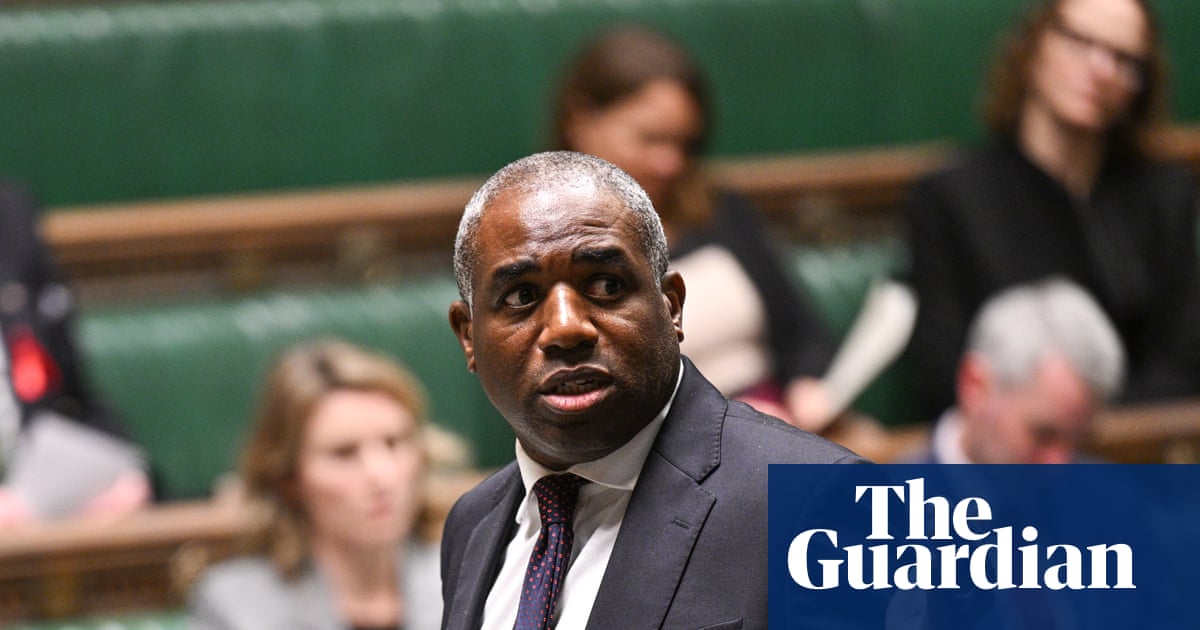Peter Kyle, until two weeks ago the technology secretary, once warned that tech companies such as Meta, Google and Microsoft were so powerful that the UK needed to approach them with “a sense of statecraft” and “humility”, and treat negotiations with them similarly to diplomacy between nations. That vision endures in the form of the UK-US tech prosperity agreement struck this week. While officially a new bilateral partnership, this seems to be a deal aimed at facilitating investment from US technology companies rather than advancing collaboration on goals such as AI safety, copyright protections for British rights holders or a digital services tax.
The rationale is clear: US firms stand alone atop the global AI value chain, making the country an obvious partner for a UK government seeking to “turbocharge” its AI sector. Against a challenging economic backdrop, the promise of “a combined £31bn” in support for UK AI infrastructure such as datacentres offers welcome headlines.
The potential challenges are nonetheless also pronounced. We know that the public harbours concerns about the motivation of these companies and their increasing entanglement with the British state. And they may reasonably have questions about this deal, too: in particular the quid pro quo that comes with investment from big tech. The firms making these pledges are not charities, and it remains unclear what local communities in areas such as Blyth, in Northumberland, will see in exchange for offering up their land and grid capacity.
In the US itself, datacentre developments have led to rising energy bills and disrupted water supplies while supporting remarkably few jobs. It is unsurprising, then, that existing plans for a new “hyperscale” datacentre in Buckinghamshire have encountered local opposition and legal pushback. To ensure its new “AI growth zones” are not beset by similar controversy, government will need to provide assurances that energy resources and other assets staked for private investment will produce returns for local economies – and to the public purse – rather than just powering profits abroad.
Then there is the opportunity cost associated with prioritising US tech over domestic alternatives. Liz Kendall, Kyle’s successor as technology secretary, has described the new partnership as a “vote of confidence in Britain’s booming AI sector”, although few of the companies involved are based – let alone owned – in Britain. Investment from US companies does not need to be zero-sum, but without deft management it risks crowding out any green shoots of growth in the UK’s own tech sector. Entrenching reliance on US technologies at the most lucrative parts of the AI value chain would leave UK firms to fight over the leftovers.
It’s true that the UK lacks the scale and resource advantages of the US, and therefore the ability to participate in cutting-edge AI development on its own: from this perspective, US investment is essential. Yet our international peers – from the EU’s “EuroStack” movement to Luiz Inácio Lula da Silva’s Brazil – have charted alternative paths to bolster sovereign capabilities and create the conditions for domestic tech firms, small and medium-sized enterprises and truly public alternatives to flourish.
All of this is downstream of the most important issue: what is the government’s vision for AI beyond doing it bigger and faster? There is too often an implicit assumption that AI will be socially and economically transformative, with the suggestion that “millions of patients could receive life-saving treatments faster” only the latest in a series of ill-defined and poorly evidenced claims. The subtext is that the promised land is in sight – but that only the investments and regulatory changes demanded by large technology companies will get us there. This, however, is precisely backwards: policymakers should instead consider what AI could tangibly achieve for people and society, and from there ask what technological investments are necessary.
When the question is posed in this way, the answers seem less obviously congenial to the profit margins of the largest incumbent firms. There may, for instance, be substantial public value to be squeezed out of previous-generation foundation models, which are far less costly to procure and run. The success of China’s DeepSeek demonstrates the potential for the UK of a “fast follower” model whereby instead of begging for scraps from big tech’s table, we wait and see what innovations will yield the most value, and pursue cost-effective ways of doing it ourselves.
Achieving this will involve the canny use of public resources to pluralise AI research and build independent capacity. The good news for our new secretary of state is that the seeds of this agenda already exist. The government’s sovereign AI unit could be tasked with supporting alternative research paradigms. Public compute and data resources such as the new AI Research Resource and National Data Library could implement access policies that favour smaller organisations, public entities and nonprofits. To ensure that public subsidies are not simply hoovered up by big tech, measures could also be taken to reduce talent and intellectual property drain and predatory corporate partnerships, with robust regulatory action encouraged when necessary.
after newsletter promotion
None of this is to say that government should abandon collaboration with the US, or with US tech companies. But cautionary tales from around the world abound in which lofty – and sincere – appeals to public good have served to underwrite big tech profits. Preventing this from happening will require vision, careful design and, yes, statecraft: construed not as deference but as the requisite skill and guile to deliver for the national interest.
-
Matt Davies is economic and social policy lead at the Ada Lovelace Institute. Imogen Parker of the Ada Lovelace Institute also contributed

.png) 2 months ago
60
2 months ago
60

















































